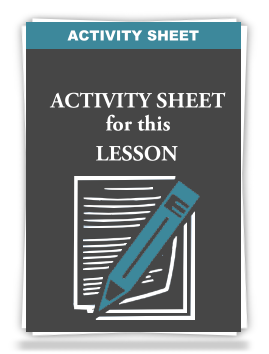- Home
- How I Help
- Designing Your Position Statement [ARTICLE]
Product IQ = Claims + Features + Benefits + Nail-downs:
Designing Your Position Statement!
Many sales professionals believe that bombarding the consumer with claims of greatness will earn them business. We see this in advertising, sales promotions, and Internet billboards, and we hear it from announcers on radio and television all the time.
As you observe your colleagues, notice whether they speak in vague generalities of claims, using phrases like “We are the best” or “We have the biggest, newest, greatest, fastest, cheapest.” Phrases containing the “est” words are typically claims, and those same claims could be made by your competition. Salespeople who make “Claims” hope that the consumer will accept those Claims without asking for verification.
Avoid using Claim statements in your presentations, as they can be turn-offs for the consumer. If a Claim is going to be made, then an associated fact statement must be offered in the same sentence. For example:
“This widget is the best (Claim) in the market right now, because of its ABC Feature (Fact or Feature). It has been rated number one in value by Consumer Reports, so it offers the quality and reliability (Benefit) you desire.”
The Claim (“best”) is immediately associated with a specific Feature (“ABC”) that is reinforced by an acknowledged third-party authority (Consumer Reports), and the Benefits presented are quality and reliability.
In many instances, baseless Claims are made by sales professionals who lack the working knowledge of the actual product or service that is necessary to accurately represent an organization. The more working knowledge a sales professional has of all the tangibles or intangibles offered by your organization--the specific facts or features--the better able he will be to point out the Benefits to the consumer.
Master sales professionals have an extensive working knowledge of what they represent and therefore of what they have to sell or offer. They have the ability to match up consumer needs with the solutions they offer by describing in detail the facts or features of the products or services they represent. The less working knowledge a sales professional has, the weaker his sales performance will be over time.
In making a simple presentation to a consumer, the sales professional may make a Claim to grab the consumer’s attention (“We are the best”), but that Claim must then be immediately associated with an appropriate and corresponding Fact or Feature statement, and with a Benefit statement. It is the Benefit statement that ties the Fact or Feature statement to “What’s in it for me?” from the buyer’s perspective.
To ensure that the sales professional has correctly connected with what is important to and valued by the consumer, the sales professional finishes the presentation sequence (Product = Claim + Features + Benefit) with a corresponding Nail-down statement (a confirming question) that might sound like this:
“And that is the level of quality and reliability that you want, isn’t it?”
A Nail-down (Product = Claim + Features + Benefit + Nail-down) is a positive statement in the form of a confirming question directed toward the consumer to reinforce a key Fact or Feature presented and tie it to the appropriate Benefit.
Getting consumers involved in this process early and showing them how you can partner with them to solve their needs is a fast track to closing sales.
One way to determine whether a sales professional can engage in this most basic dialogue with a consumer is to find out how he responds when asked, “What do you do?” or “What makes your organization better than others?” I refer to the sales professional’s response as his Position Statement. In other words, how do you position yourself when given the opportunity to gain another person’s attention and interest?
A Position Statement must be very natural, simple, and powerful, so that you tell the other person just enough but not too much about whom you are. It should be worded in such a way that it almost compels the listener to ask for more information. It should be an automatic response to anyone, anywhere, who asks, “So, what do you do?” Some professionals call this statement an elevator pitch. If you were on an elevator and had only a precious few seconds to answer that question, what would you say that would motivate the other person to get off the elevator with you and ask for more information?
A sales professional’s first words create your first impression. Your Position Statement draws upon your basic working knowledge of what you offer: the features, the associated benefits, and how the benefits answer a need expressed by the other person. This is the foundation for selling success.
If I were selling skill development training sessions to a client, my Position Statement might sound like this:
“I work with individuals who want to significantly increase their ability to interact with others effectively, resulting in better account relationships and more profitable sales!” If someone is serious about wanting to improve his sales effectiveness, he is almost sure to follow up by asking me more questions. I now have an opportunity to draw upon my basic working knowledge to serve his needs, and that results in a sale!
Remember, a Claim is an assertion; a Fact or Feature is a tangible expression of what something does or is; a Benefit is how a Feature helps someone; and a Nail-down is a statement that seeks confirmation from the other party that the Claim + Feature + Benefit sequence you have selected is relevant and important to them.
Strong sales professionals have a highly developed working knowledge of what they offer and who they are.





